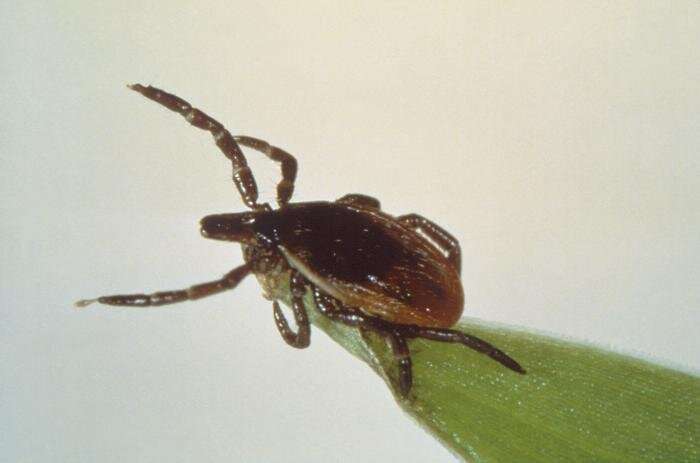
A new analysis suggests that north-south differences in ticks’ host choice, density, and host-seeking behaviors may explain why Lyme disease is more prevalent in the northeastern U.S. than in the southeast. Howard Ginsberg of the U.S. Geological Survey’s Patuxent Wildlife Research Center and colleagues present these findings in an article publishing January 28th in the open-access journal PLOS Biology.
A person can develop Lyme disease after being bitten by a tick that acquired the corkscrew-shaped Lyme disease-causing Borrelia bacteria from another vertebrate host. While ticks are found in both the northeastern and southeastern U.S., Lyme disease is more common among people in the northeast. However, the causes of this geographical gradient have been unclear.
To better understand geographical patterns of Lyme disease, Ginsberg and colleagues conducted an extensive investigation of ticks, their hosts, and tick-host interactions at eight field sites up and down the eastern U.S.
The researchers found that, compared to northern ticks, southern ticks have a tendency to select lizards as their hosts, rather than small mammals. This is notable because lizards infected with Lyme disease-causing bacteria are less likely than small mammals to pass it along to other ticks. Therefore, a tendency to bite lizards instead of mammals might help explain why fewer southern ticks become infected, and in turn, fewer people are infected.
Previous research by this group showed that southern ticks tend to stay below leaf litter when seeking hosts, while northern ticks tend to climb to leaf tops and twigs, perhaps making them more likely to bite passing humans. In addition, variations in tick densities from north to south could also help explain the Lyme-disease gradient.
These findings could help resolve longstanding debates over the causes of the north-south gradient of Lyme disease in the eastern U.S. Future research could explore how climate change and its ecological effects on ticks and hosts might impact Lyme disease patterns in the U.S. and Canada.
Source: Read Full Article